Literary rating: ★★★★★
Kick-butt quotient: ☆☆
With this 2013 novel, Armstrong brings her original Nadia Stafford trilogy to a satisfying conclusion (although the two later novellas carry on the story in a rewarding way). Again, six months have passed since the previous installment, so our chronological setting is the latter part of October, 2007.
By the end of the second novel, Nadia had recognized that her true romantic feelings are for Jack. But she also concluded that her taciturn and seemingly unemotional mentor didn’t return them (although readers might be less sure of that). So in the intervening months since, she and Quinn have added a sexual component to their long-distance relationship (they get together about once a month). For readers who view sex as expressive body language for a total self-giving in life-long love and fidelity, it’s not hard to predict that introducing it into a situation where both parties profess no hurry to be committed (and one is in love with someone else) is likely to end in emotional disaster.
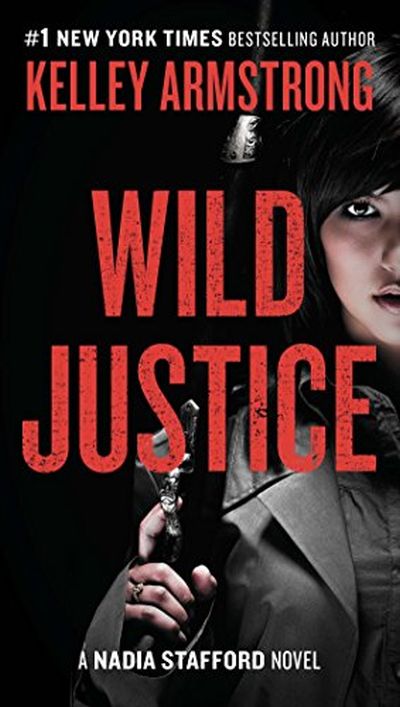 That’s what happened here, about a month ago,with Quinn wanting to move in the direction of engagement and marriage and Nadia not willing to, leading to a messy breakup that left him very hurt and her “feeling like [vulgarism deleted].” :-( On top of that stress, when this book opens, she’s in rural Michigan on a job (of the kind that she doesn’t advertise). That quickly results, though through no fault of her own, in a traumatic event which has her on the point of meltdown. But before long, she’s in for a moral and emotional ordeal which will make her present distresses look relatively mild.
That’s what happened here, about a month ago,with Quinn wanting to move in the direction of engagement and marriage and Nadia not willing to, leading to a messy breakup that left him very hurt and her “feeling like [vulgarism deleted].” :-( On top of that stress, when this book opens, she’s in rural Michigan on a job (of the kind that she doesn’t advertise). That quickly results, though through no fault of her own, in a traumatic event which has her on the point of meltdown. But before long, she’s in for a moral and emotional ordeal which will make her present distresses look relatively mild.
Both previous novels have made us aware of the formative event of Nadia’s life, which happened when she was only 13. That was the night she and her beloved 14-year-old cousin Amy (with Nadia along because, as usual, she was trying to keep the headstrong older girl out of trouble) got taken to a lonely woodland cabin by a budding psychopath in his early 20s named Drew Aldritch. Nadia was able to escape and run for help, but Amy still ended up raped and killed. At the trial, Nadia wasn’t called to testify; and it didn’t help that Amy was a bit of a “wild child” with a reputation as a flirt.
The defense exploited that to claim that the sex was “consensual,” and that Aldritch strangled his victim to death “accidentally.” So the jury acquitted him. (Yes, this is fiction; but sadly, even in real life, there are jurors who would actually be that idiotic.) He left town immediately; and Nadia hasn’t seen him since. But the horror of the tragedy, and the survivor’s guilt, has stayed with her for 20 years, shaping her into the adult woman she became, and leaving her with intermittent nightmares from which she still wakes up screaming.
Jack knows something about the baleful influence of teenage trauma (and we’ll learn something, in the course of this book, about his past and how it shaped him –our leading lady here isn’t the only character with painful baggage). Early on, Jack discloses that, on his own initiative, he’s tracked Aldritch down to where he’s now living in Ohio under his latest alias, and working, of all things, as a small-town cop –and there’s good reason to believe that his behavior and proclivities haven’t changed for the better in the ensuing decades. So Nadia now has to decide what to do with this knowledge. Whatever happens, this trip down Memory Lane is not going to be a pleasant stroll; and it will prove to be a dark, harrowing, twisty and dangerous one, with more than one major surprise.
As usual, there’s a genuine mystery (actually, more than one) at the heart of this tale; and solving it, and surviving to the point of solving it, will be a challenge. (Luckily, Nadia’s tough and resourceful.) In terms of style, this book is much of a piece with the preceding ones in most respects, including the language issues. Again, there’s no explicit sex, but there is some unmarried sex that takes place, and some scenes are steamier than some readers might want. Romance, and related angst, doesn’t take over the plot, but it plays a more important role than it has up to now, and there will be a significant development in that area. (The books definitely are best read in order.) At one point, a character imparts a crucial piece of information that later developments show that he wouldn’t have known, but that’s the only logical slip; in the main, the plotting is impeccable. For any readers who liked the first two books, this one has to rank as a must-read; and I don’t believe any of them will be disappointed with it!
Author: Kelley Armstrong
Publisher: Penguin Group; available through Amazon, both for Kindle and as a printed book.
A version of this review previously appeared on Goodreads.





 Although I first experienced this series through the two sequel novellas, this second installment of Armstrong’s Nadia Stafford trilogy would be best read after the series opener, Exit Strategy. References are made to events in the first book, and to parts of Nadia’s backstory which are detailed there, and these are much more meaningful if you’ve read the first installment. Even more importantly, Armstrong really introduces Nadia’s complex character and current circumstances in depth in the first book; the development she undergoes here presupposes that foundation. (That’s also true for other characters from that book who continue to play roles here; you need the full-orbed picture to understand them.)
Although I first experienced this series through the two sequel novellas, this second installment of Armstrong’s Nadia Stafford trilogy would be best read after the series opener, Exit Strategy. References are made to events in the first book, and to parts of Nadia’s backstory which are detailed there, and these are much more meaningful if you’ve read the first installment. Even more importantly, Armstrong really introduces Nadia’s complex character and current circumstances in depth in the first book; the development she undergoes here presupposes that foundation. (That’s also true for other characters from that book who continue to play roles here; you need the full-orbed picture to understand them.)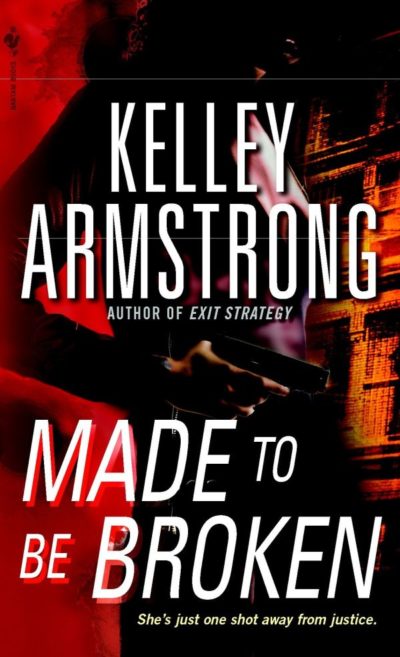 Even with her off-the-books side income, Nadia can’t afford to pay more than a tiny staff at her guest lodge; but out of kindness, she’s given a job as assistant housekeeper to a 17-year-old girl from the nearby small town of White Rock, Sammi Ernst. Sammi’s foul-mouthed, barely literate, and has a chip on her shoulder; the latter isn’t surprising, given her life situation. She’s the out-of-wedlock daughter of Janie Ernst. Both women are widely looked down on in the community –Janie because she’s a drunken, mean-tempered, self-centered deadbeat, and Sammi mainly because she has Janie for an (abusive) mother. Also a single mom herself, Sammi’s not promiscuous like Janie (she had a single affair, with a visiting rich college kid who wasn’t interested in marriage or fatherhood, and left her to bear his unacknowledged daughter alone); and also unlike her own mom, she genuinely loves baby Destiny, and wants to work to support her, rather than making a dead-end career out of welfare dependency as Janie has.
Even with her off-the-books side income, Nadia can’t afford to pay more than a tiny staff at her guest lodge; but out of kindness, she’s given a job as assistant housekeeper to a 17-year-old girl from the nearby small town of White Rock, Sammi Ernst. Sammi’s foul-mouthed, barely literate, and has a chip on her shoulder; the latter isn’t surprising, given her life situation. She’s the out-of-wedlock daughter of Janie Ernst. Both women are widely looked down on in the community –Janie because she’s a drunken, mean-tempered, self-centered deadbeat, and Sammi mainly because she has Janie for an (abusive) mother. Also a single mom herself, Sammi’s not promiscuous like Janie (she had a single affair, with a visiting rich college kid who wasn’t interested in marriage or fatherhood, and left her to bear his unacknowledged daughter alone); and also unlike her own mom, she genuinely loves baby Destiny, and wants to work to support her, rather than making a dead-end career out of welfare dependency as Janie has.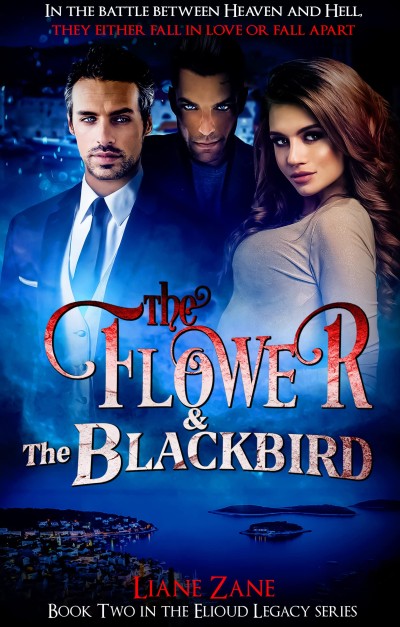 My friend Liane Zane kindly gifted me with a paperback copy of this second of her Elioud Legacy novels, as she did with the first one (The Harlequin & The Drangùe), in exchange for an honest review. Having liked the first book, I was glad to accept; and I wasn’t disappointed with the sequel!
My friend Liane Zane kindly gifted me with a paperback copy of this second of her Elioud Legacy novels, as she did with the first one (The Harlequin & The Drangùe), in exchange for an honest review. Having liked the first book, I was glad to accept; and I wasn’t disappointed with the sequel!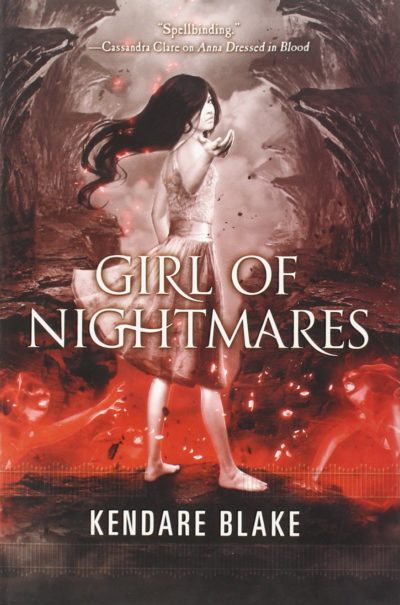 Warning: while this review contains no spoilers for the book I’m reviewing, it inevitably involves some spoilers for the book to which it’s a sequel, Anna Dressed in Blood. (I didn’t review that one here; see below). The situation in this book directly grows out of the events of the first one; and though the author provides some brief references to those in the opening chapters here, if you have not read the series opener, you would get only the very bare basics of what happened there. IMO, she expected that her readers will read the books in order, and I would strongly recommend doing so. Your whole understanding of the premise here, your engagement with the story, and your understanding of who most of the major characters are as people and your emotional connection to them will be seriously impaired if you don’t!
Warning: while this review contains no spoilers for the book I’m reviewing, it inevitably involves some spoilers for the book to which it’s a sequel, Anna Dressed in Blood. (I didn’t review that one here; see below). The situation in this book directly grows out of the events of the first one; and though the author provides some brief references to those in the opening chapters here, if you have not read the series opener, you would get only the very bare basics of what happened there. IMO, she expected that her readers will read the books in order, and I would strongly recommend doing so. Your whole understanding of the premise here, your engagement with the story, and your understanding of who most of the major characters are as people and your emotional connection to them will be seriously impaired if you don’t!

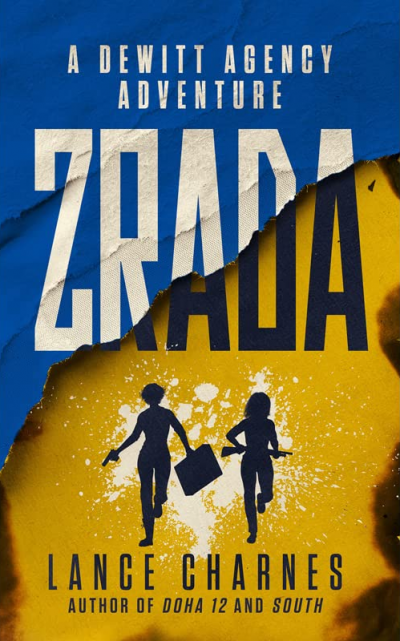 Lance Charnes and I are Goodreads friends, and I’ve read and liked two of his earlier novels; so he offered me a free review copy of this newly-published book. (There wasn’t any guarantee that I’d also like this one, but he does know my tastes pretty well.) The opener for a projected new series, this tale spins off from the author’s DeWitt Agency Files, and Carson (no first name!), the protagonist here, is an important character in the opener for the first series, The Collection. (This review avoids spoilers for Zrada, but might have some for the former novel.)
Lance Charnes and I are Goodreads friends, and I’ve read and liked two of his earlier novels; so he offered me a free review copy of this newly-published book. (There wasn’t any guarantee that I’d also like this one, but he does know my tastes pretty well.) The opener for a projected new series, this tale spins off from the author’s DeWitt Agency Files, and Carson (no first name!), the protagonist here, is an important character in the opener for the first series, The Collection. (This review avoids spoilers for Zrada, but might have some for the former novel.)
 Vampires generally don’t bite their Sorcerer enemies; they just try to kill them. But a rare bitten Sorcerer becomes a half-vampire, with some vampire traits (including a blood thirst –though vampires don’t have to indulge that with human blood, despite the strong temptation) combined with ability to use magic, though just as in the Potter books, that takes training. Unfortunately for Tara, that not only poses theological conundrums for a good Baptist young lady; half-vampires are considered by both the Vampire Council and the Sorcerer’s Parliament as unnatural abominations that need to be killed on sight. And then there’s the added wrinkle that, as Council agent Lucius soon reveals, Tara’s assailant was working for a rogue Vampire Lord who has his own agenda –and it’s an agenda the rest of the world won’t like.
Vampires generally don’t bite their Sorcerer enemies; they just try to kill them. But a rare bitten Sorcerer becomes a half-vampire, with some vampire traits (including a blood thirst –though vampires don’t have to indulge that with human blood, despite the strong temptation) combined with ability to use magic, though just as in the Potter books, that takes training. Unfortunately for Tara, that not only poses theological conundrums for a good Baptist young lady; half-vampires are considered by both the Vampire Council and the Sorcerer’s Parliament as unnatural abominations that need to be killed on sight. And then there’s the added wrinkle that, as Council agent Lucius soon reveals, Tara’s assailant was working for a rogue Vampire Lord who has his own agenda –and it’s an agenda the rest of the world won’t like. Barb and I discovered evangelical Christian author Mary Connealy through her Sophie’s Daughters trilogy, partially set in Montana in the years from 1878 to 1884. Several characters who figure in her earlier Montana Marriages trilogy, of which this novel is the third, also play important roles in the later one. So we were interested in their back stories; and when I found this book in a thrift store, it was a natural purchase! (We’ve also just started reading the second installment; long story!) This means we’re reading the trilogy in reverse order; so we started with much more knowledge of the characters’ future than the original readers would have (the read was more like a visit with old friends). However, I’ll avoid spoilers in this review. (Obviously, though, it might contain “spoilers” for the earlier Montana Marriages novels.)
Barb and I discovered evangelical Christian author Mary Connealy through her Sophie’s Daughters trilogy, partially set in Montana in the years from 1878 to 1884. Several characters who figure in her earlier Montana Marriages trilogy, of which this novel is the third, also play important roles in the later one. So we were interested in their back stories; and when I found this book in a thrift store, it was a natural purchase! (We’ve also just started reading the second installment; long story!) This means we’re reading the trilogy in reverse order; so we started with much more knowledge of the characters’ future than the original readers would have (the read was more like a visit with old friends). However, I’ll avoid spoilers in this review. (Obviously, though, it might contain “spoilers” for the earlier Montana Marriages novels.)